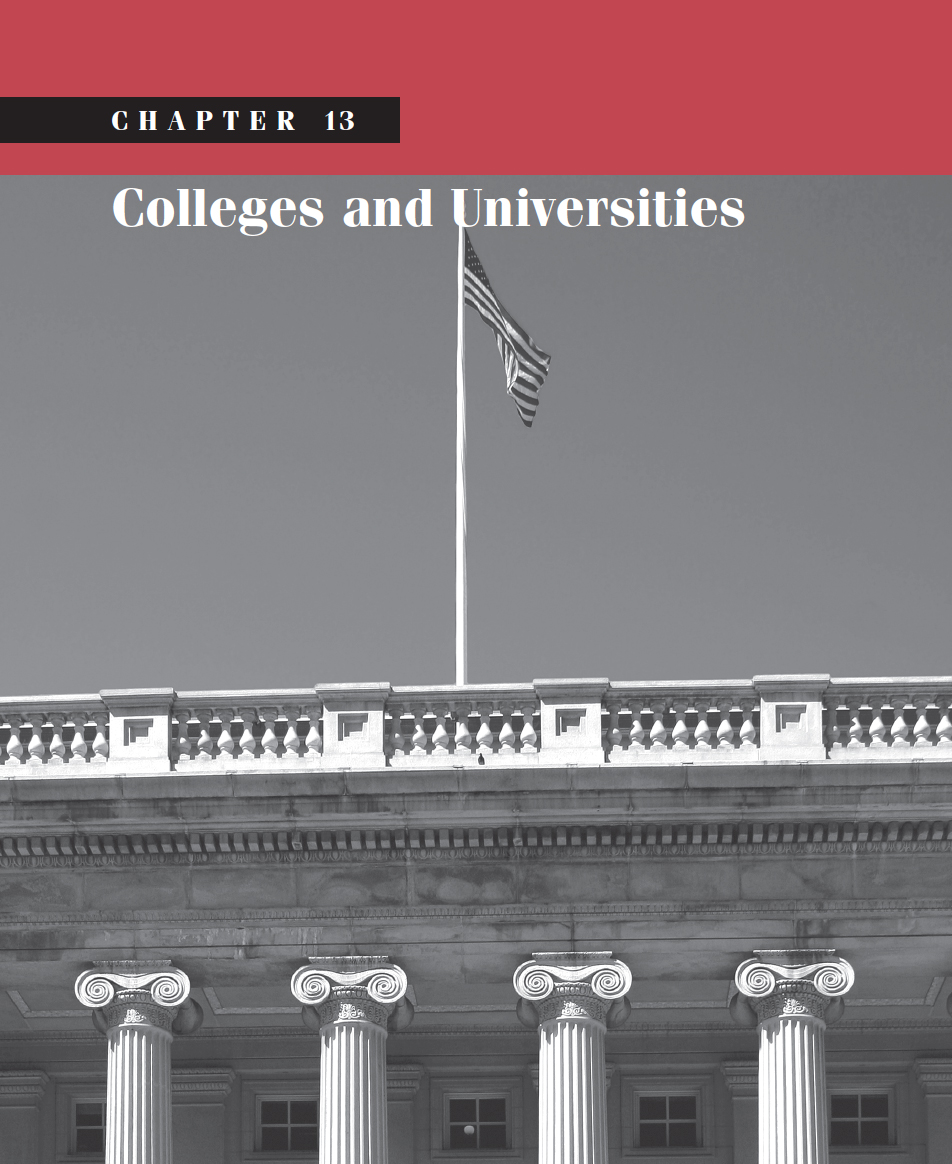
LEARNING OBJECTIVES
After studying this chapter you should understand:
- The unique issues faced by colleges and universities at large
- The different reporting options available to public (government) and private (other not-for-profit) colleges and universities
- The differences in form and content of reports between public and private colleges and universities
- How colleges and universities classify revenues and expenses
- How tuition and fees are accounted for
- How grants are accounted for
- How student loans are accounted for
- The special concerns related to auxiliary enterprises
In this chapter we address the special issues faced by colleges and universities. In addition, we will take note of the key differences between private (not-for-profit) and public (governmental) educational institutions. FASB's Statement No. 117, Financial Statements of Not-for-Profit Organizations, applies to not-for-profit colleges and universities no less than it does to other types of not-for-profit entities. Accordingly, there is little need to readdress the issues identified in Chapter 12.1 We leave it to the reader to generalize from the discussion in that chapter and apply its principles to universities. For example, the accounting for exchange transactions, contributions and pledges, investment gains and losses, depreciation, split interest agreements, and reporting entities are either not explicitly ...
Get Government and Not For Profit Accounting: Concepts and Practices, 6th Edition now with the O’Reilly learning platform.
O’Reilly members experience books, live events, courses curated by job role, and more from O’Reilly and nearly 200 top publishers.

